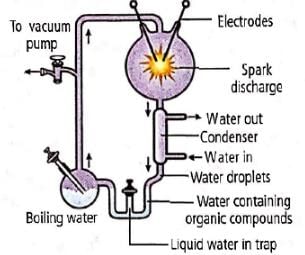Test: Origin of Life (NCERT) - NEET MCQ
15 Questions MCQ Test Biology Class 12 - Test: Origin of Life (NCERT)
Which one of the following experiments suggests that simplest living organisms could not have originated spontaneously from non-living matter?
According to one of the most widely accepted theories, earth's atmosphere before origin of life was
From the point of view of early chemical evolution that preceded the origin of life on earth, the most important simple organic molecules formed were
Who proposed that the first form of life could have come from pre-existing nonliving organic molecules?
The prebiotic atmosphere of the earth was of a reducing nature. It was transformed into an oxidising atmosphere of present day due to the emergence of
In the experiment in given diagram which of the following groups of gases were used to simulate primitive atmosphere?

According to Oparin, which one of the following was not present in the primitive atmosphere of the earth?
The following are some major events in the early history of life
P. First heterotrophic prokaryotes
Q. First genes
R. First eukaryotes
S. First autotrophic prokaryotes
T. First animals
Which option below places these events in the correct order?
Early atmosphere contained methane and other hydrocarbons. They have been now replaced by
Theory of spontaneous generation was rejected because:
|
78 videos|277 docs|174 tests
|




















